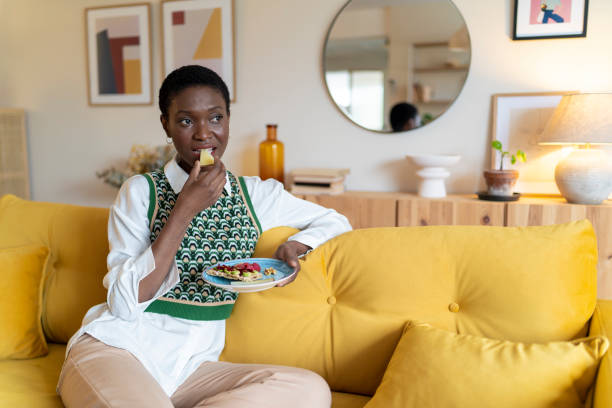
Maintaining a healthy lifestyle involves a delicate balance between nutrition and well-being. In the realm of women's health, particularly for Black women, understanding the connection between diet and overactive bladder (OAB) is crucial. In this article, we will explore the intricate relationship between dietary choices and the prevalence of OAB among Black women.
Diet and Overactive Bladder
Overactive bladder is a condition characterized by a sudden and involuntary urge to urinate, often leading to frequent bathroom trips. While multiple factors contribute to OAB, including age, hormonal changes, and genetics, the role of your diet should not be underestimated. Let's delve into how specific dietary choices may impact your experience with OAB.
1. Hydration Habits
Proper hydration is essential for your overall health, but excessive fluid intake, especially of caffeinated and acidic beverages, may exacerbate OAB symptoms.
Traditional beverages like sweet tea or sodas may contribute to increased urgency and frequency. Consider balancing your hydration with water intake and opting for herbal teas as a beneficial adjustment.
2. Soul Food and Sodium
Soul food, deeply rooted in our culture, often involves dishes that are high in sodium. Excessive salt intake can lead to water retention and increased pressure on your bladder.
You might find benefit in exploring low-sodium alternatives and incorporating more fresh, whole foods into your diet.
3. Impact of Spices
Spices are a hallmark of many Black cuisines, contributing to the richness and depth of flavor. However, certain spices can act as bladder irritants, potentially worsening OAB symptoms. It's essential to identify specific spices that may trigger discomfort and experiment with milder alternatives.
4. The Importance of Fiber
Dietary fiber plays a vital role in promoting digestive health and may indirectly impact OAB. Consider incorporating more fiber-rich foods such as fruits, vegetables, and whole grains into your diet. This can contribute to better overall health and potentially alleviate OAB symptoms.
5. Cultural Sensitivity in Dietary Adjustments
Recognizing the cultural significance of food is crucial when making dietary changes. You can adapt your traditional dishes by choosing healthier cooking methods, exploring alternative ingredients, and maintaining the essence of cultural flavors.
Healthy alternatives
1. Caffeinated Beverages
- Traditional Choices: Drinks like coffee, tea, and some sodas are culturally popular but can be high in caffeine.
- Healthier Alternatives: Opt for decaffeinated versions or herbal teas that do not contain caffeine, reducing the potential for increased urgency.
2. Citrus Fruits
- Traditional Choices: Oranges, lemons, and grapefruits are commonly used in various dishes.
- Healthier Alternatives: Explore fruits with lower acidity levels, such as berries or melons, to minimize irritation.
3. Spicy Foods
- Traditional Choices: Some traditional spices and dishes can be spicy and potentially irritate the bladder.
- Healthier Alternatives: Experiment with milder spices or reduce the quantity of spicy ingredients to find a balance that suits your preferences.
4. Alcohol
- Traditional Choices: Alcoholic beverages are often part of cultural celebrations.
- Healthier Alternatives: If you choose to drink, consider moderation or explore non-alcoholic alternatives to minimize potential bladder irritation.
5. Tomatoes and Tomato-Based Products
- Traditional Choices: Tomatoes and tomato-based ingredients are common in many dishes.
- Healthier Alternatives: Experiment with dishes that use less acidic alternatives or explore cooking techniques that may reduce acidity.
6. Carbonated Drinks
- Traditional Choices: Carbonated sodas and sparkling water may be part of cultural beverage choices.
- Healthier Alternatives: Choose still water or herbal teas to stay hydrated without the potential bladder irritation associated with carbonation.
7. Artificial Sweeteners
- Traditional Choices: Some processed foods and drinks, particularly diet products, contain artificial sweeteners.
- Healthier Alternatives: Choose natural sweeteners like honey or maple syrup, and be mindful of ingredient labels to avoid artificial sweeteners.
8. Highly Processed Foods
- Traditional Choices: Processed foods may be convenient but often contain additives and preservatives.
- Healthier Alternatives: Opt for whole, minimally processed foods to reduce the intake of potential irritants and support overall health.
9. Highly Acidic Foods
- Traditional Choices: Some traditional dishes may include highly acidic components.
- Healthier Alternatives: Balance acidic foods with alkaline options, such as green leafy vegetables, to minimize acidity in the diet.
10. Dairy Products
- Traditional Choices: Some traditional dishes may include dairy, which can be problematic for those with lactose intolerance.
- Healthier Alternatives: Explore lactose-free or plant-based alternatives like almond or soy milk.
It's important to remember that each person's tolerance to these foods and drinks can vary. Keeping a food diary and monitoring how your body responds to different items can help identify specific triggers. Consulting with a healthcare professional or a registered dietitian can provide personalized guidance based on individual needs and health conditions.
Understanding the intricate relationship between your diet and an overactive bladder is a crucial step in empowering you to take control of your health. By making informed dietary choices, embracing cultural sensitivity, and exploring healthier alternatives, you can navigate the challenges of OAB with resilience and grace. It's a journey towards holistic well-being that combines your cultural heritage with modern health insights.






